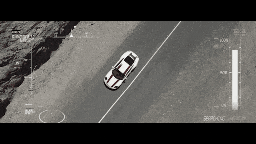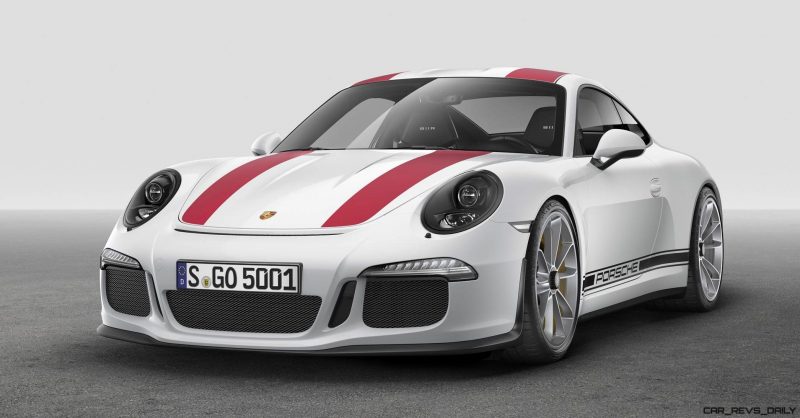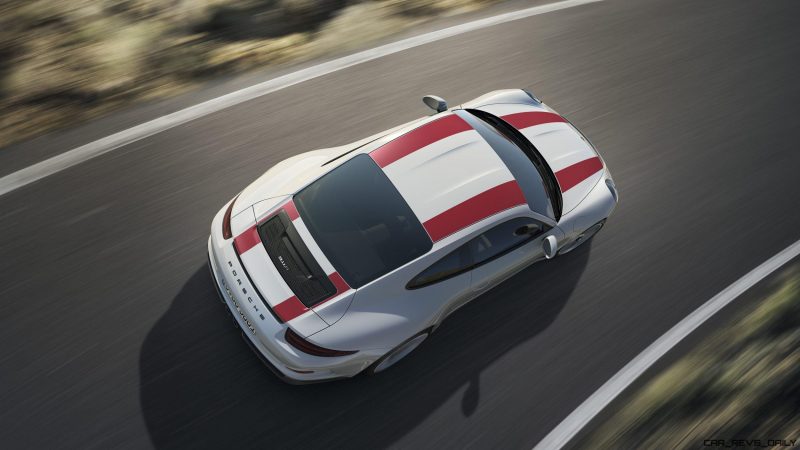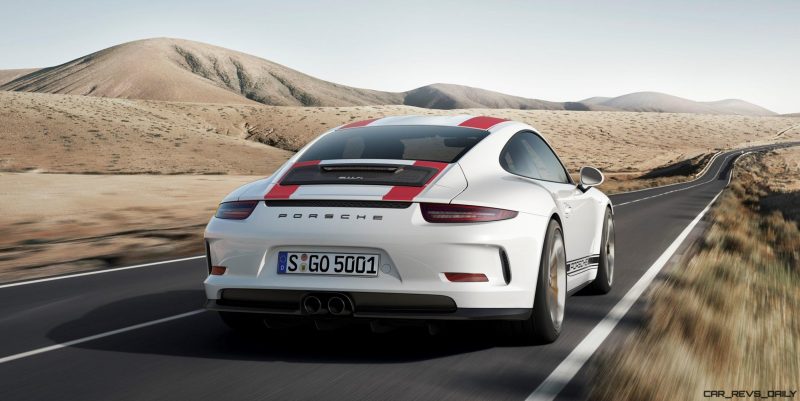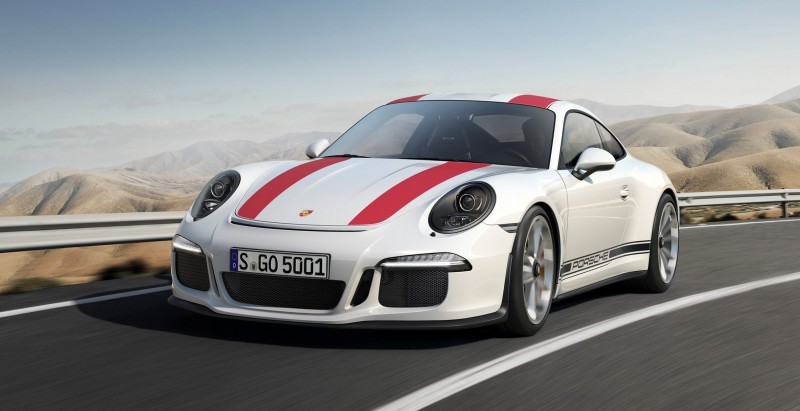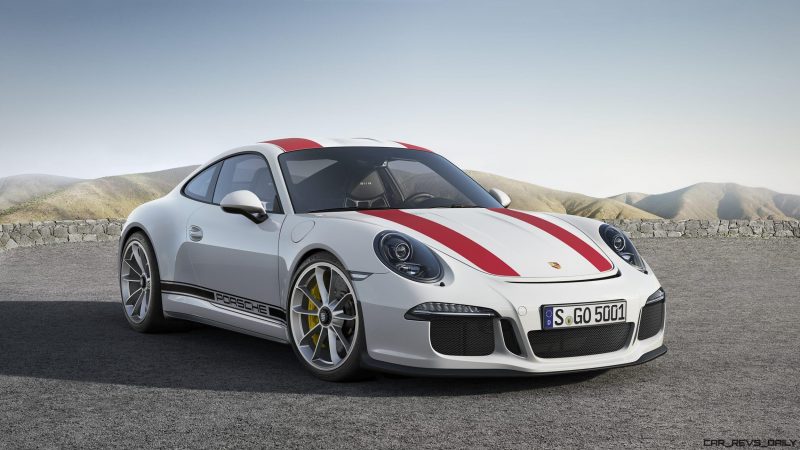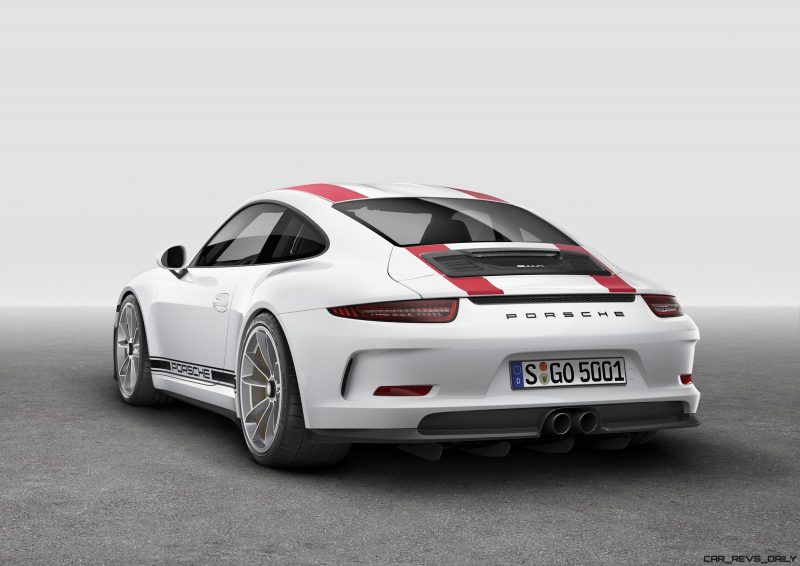 The new 911R is our ideal Porsche. A classic — even after just debuting a few hours ago.
The new 911R is our ideal Porsche. A classic — even after just debuting a few hours ago.
All the 911 GT3 and GT3 RS’s shrieking, shrill thrills from a naturally-aspirated 4.0-liter boxer six making 500HP. But now without the additional bodywork addenda and packing carbon-fiber fenders. Even a magnesium roof!
All this purity and the lack of PDK drops weight from the machine fairly dramatically: a full 50kg less than the hardest-core GT3 RS.
Performance will be a full-body sensory immersion. In the best hands, Porsche promises the 100-kph sprint in 3.8-seconds. Perhaps not a headline figure, but your effort and skill play a much bigger role in that launch than with the paddle-shifters or turbo models.
As the 991 II (yes, that is what it goes by) model series evolves to turbocharged for almost all its two-dozen varieties, the 911R represents a chance to own the ideal, dream 911. Not aircooled, but it will get you hot under the collar, regardless!
The new 911R is available to order now in Germany, with first deliveries by this Summer. A global rollout is possible, but not confirmed, for the 991-unit, limited-run special.
2017 Porsche 911R
Limited special model with naturally aspirated engine and manual transmission
Wolf in sheep’s clothing – the new Porsche 911 R
Stuttgart. With its new 911 R, Porsche is unveiling a puristic sports car in classical design at the 2016 Geneva International Motor Show. Its 368 kW (500 hp) four-litre naturally aspirated flat engine and six-speed sports transmission places the 911 R firmly in the tradition of its historic role model: a road-homologated racing car from 1967. Produced as part of a limited production series, the 911 R (R for Racing) performed in rallies, in the Targa Florio and in world record runs. Like its legendary predecessor, the new 911 R relies on systematic lightweight construction, maximum performance and an unfiltered driving experience: this special limited-edition model of 991 units has an overall weight of 1,370 kilograms and is currently the lightest version of the 911. With the high-revving six-cylinder naturally aspirated engine and manual sports transmission, Porsche is once again displaying its commitment to especially emotional high-performance sports cars. Developed in the motorsport workshop, the 911 R extends the spectrum of high-performance naturally aspirated engines alongside the motor racing models 911 GT3 and 911 GT3 RS.
At work in the rear of the 911 R is the six-cylinder flat engine with a displacement of four litres, familiar from the 911 GT3 RS. The racing engine delivers 500 hp at 8,250 rpm and generates 460 Nm at a speed of 6,250 rpm. From a standing start, the rear-engined car breaks through the 100 km/h barrier in 3.8 seconds. In keeping with the puristic character of the vehicle, the 911 with its lightweight design is available exclusively with a six-speed sports transmission. Short gearshift travel underlines the active driving experience. The forward thrust of the 911 R continues to a speed of 323 km/h. Combined fuel consumption in the NEDC is 13.3 l/100 km.
A thoroughbred driving machine: technology from the race track
The 911 R could almost have been made for tight corners. The specially tuned standard rear-axle steering guarantees especially direct turn-in characteristics and precise handling while maintaining high stability. The mechanical rear differential lock builds up maximum traction. Ensuring the greatest possible deceleration is the Porsche Ceramic Composite Brake (PCCB) as a standard feature. It measures a generous 410 millimetres on the front axle and 390 millimetres on the rear. Ultra High Performance Tyres of size 245 millimetres at the front and 305 millimetres at the rear are responsible for contact to the road. They are mounted on forged 20-inch lightweight wheels with central lock in matt aluminium.
Motorsport development has specially adapted the control systems of the Porsche Stability Management (PSM) for the 911 R. A double-declutch function activated by pressing a button for perfect gearshifts when changing down is also part of the repertoire of the 911 R as is the optional single-mass flywheel. The result is a significant improvement in spontaneity and high-revving dynamics of the engine. For unrestricted practicality in everyday use, a lift system can also be ordered: it raises ground clearance of the front axle by approximately 30 millimetres at the touch of a button.
With its overall weight of 1,370 kilograms, the 911 R undercuts the 911 GT3 RS by 50 kilograms. Bonnet and wings are made of carbon and the roof of magnesium. This reduces the centre of gravity for the vehicle. Rear windscreen and rear side windows consist of lightweight plastic. Additional factors are the reduced insulation in the interior and the omission of a rear bench seat. The optional air conditioning system and the radio including audio system also fell victim to the slimming cure.
Wolf in sheep’s clothing: classic 911 look with GT motor racing technology
From the exterior, the 911 R gives a reserved impression. At first sight, the body resembles that of the Carrera. Merely the nose and rear body familiar from the 911 GT3 hint at the birthplace of the 911 R: namely the motorsport department in Flacht. In technical terms therefore, the 911 R has a lot to show under the bonnet: the drive technology comes from the 911 GT3 RS. All the lightweight components of the body and the complete chassis originate from the 911 GT3. However, with a view to road use, the body manages without the fixed rear wing. Instead, a retractable rear spoiler, familiar from the Carrera models, and a rear underbody diffuser specific to R models provide the necessary downforce. Front and rear apron come from the 911 GT3. The sports exhaust system consists of the lightweight construction material titanium. A redesigned spoiler lip is installed at the front. Porsche logos on the sides of the vehicle and continuous colour stripes in red or green over the entire mid-section of the vehicle show the relationship to its legendary predecessor.
The driver sits in a carbon full bucket seat with fabric centre panels in Pepita tartan design, recalling the first 911 in the 1960s. An “R-specific” GT sport steering wheel with a diameter of 360 millimetres receives steering commands from the driver. Gearshifts take place in traditional manner via an R-specific short gearshift lever and the clutch pedal. Carbon trim strips in the interior with an embedded aluminium badge on the front passenger’s side indicate the limited number of the 911 R. A typical feature of GT vehicles are the pull straps as door openers.
Launch and prices
Orders for the 911 R can be placed as of now. In Germany it will be in the showrooms as of May. Inclusive of value added tax and country-specific features, it costs 189,544 euros.

Tom Burkart is the founder and managing editor of Car-Revs-Daily.com, an innovative and rapidly-expanding automotive news magazine.
He holds a Journalism JBA degree from the University of Wisconsin – Madison. Tom currently resides in Charleston, South Carolina with his two amazing dogs, Drake and Tank.
Mr. Burkart is available for all questions and concerns by email Tom(at)car-revs-daily.com.


